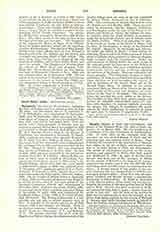

Savannah, Diocese of (SAVANENSIS), comprises the State of Georgia and was created as such by Pius IX, 1850. The first bishop, Rev. F. X. Gartland, V. G. of Philadelphia, was consecrated September 10, 1850; died September 20, 1854; succeeded by Rev. John Barry of Augusta, who was consecrated August 2, 1857, and died November 21, 1859. Rev. Augustus Verot, Vicar-Apostolic of Florida, was appointed to succeed Bishop Barry but resigned in 1870 and returned to Florida where he died June 10, 1876. Rt. Rev. Ignatius Persico, then in the Diocese of Charleston, was transferred to Savannah, March 11, 1870, resigning two years after through ill health. On April 27, 1873, Rev. William H. Gross, C.SS.R., was consecrated but transferred to the Archiepiscopal See of Oregon City in 1885, and was succeeded by the Rt. Rev. Thomas A. Becker, who was transferred from the See of Wilmington, May 16, 1886. He died July 27, 1899, and was succeeded by the present incumbent Very Rev. B. J. Keiley. Bishop Keiley was born in 1847; went to school at Petersburg, Va.; entered the Confederate service in 1864; went to St. Charles College, Ellicott City, Md., for a brief period in 1868; went to Rome in 1869; was ordained priest December 31, 1873; appointed pastor of New Castle, Delaware, September 24, 1873; transferred to rector-ship of pro-cathedral, Wilmington, Delaware, August, 1880. On the transfer of Bishop Becker to Savannah in May, 1886, he obtained permission from Rome to go to that diocese, where he was made pastor of Immaculate Conception Church and vicar-general December 3, 1886. Called to Savannah, July 12, 1896, he was made rector of the cathedral, appointed Bishop of Savannah, April 19, 1900, and consecrated by Cardinal Gibbons, June 3, 1900, in St. Peter’s Cathedral, Richmond. The Bishop of Savannah is a corporation sole and title to church property rests in him. A majority of the secular priests are of Irish descent, with a few German and French. There is no diocesan seminary; students are sent to St. Bernard’s, Rochester, Dunwoodie, N. Y., and Belmont, N. C. The present cathedral, that of St. John the Baptist, was finished during the administration of the present bishop upon the ruins of the one completed by Bishop Gross, destroyed by fire February 6, 1898. The cornerstone of the first church of St. John the Baptist was laid May 30, 1800. There are academies in Savannah, Macon, Augusta, Columbus, and Washington under the care of the Sisters of St. Joseph and Sisters of Mercy; day colleges for boys: in Augusta, under the Jesuit Fathers; in Savannah, under the Benedictine Fathers, and in Atlanta under the Marist Fathers. There is an orphanage for girls, in Savannah, in charge of the Sisters of Mercy, and for boys, in Washington, in charge of the Sisters of St. Joseph. Hospitals, at Savannah and Atlanta, are under the Sisters of Mercy. Under certain restrictions, Mass is said in the Federal prison at Atlanta where a Catholic priest exercises the duties of chaplain under a salary from the Government. Under the administration of Bishop Keiley the entire charge of the colored people has been given to the Fathers of the African Mission, who have established churches in Savannah, Atlanta, and one at Macon, adjoining the novitiate of the Jesuits. Diocesan collections are taken annually. The Eucharistic League is widely established, St. Vincent de Paul Conferences and Holy Name Societies are local throughout the diocese, as well as Sodalities of the Sacred Heart and of the Blessed Virgin Mary. In addition to the orders mentioned there are Sisters of St. Francis for the colored people at Savannah and Augusta, and Little Sisters of the Poor at Savannah. The annual retreats are attended by every priest in the diocese. The statistics in May, 1911, were: priests, regular and secular, 74; churches with resident priests, 19; missions with churches, 14; stations regularly attended, 81; chapels, 14; colleges, 3; academies, 10; parish schools, 16; white orphanages, 2; colored, 2; home for aged poor, 1; hospitals, 2; population, 15,583.
JARVIS KEILEY

